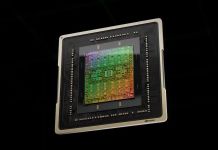NVIDIA G80 is expected to hit the market a bit sooner than ATI’s R600 and much thanks to this is that NVIDIA’s first DirectX 10-capable graphics circuit is based upon the well tested method of separate pixel and vertex shaders. ATI has chosen to go the other way by using a unified shader architecture with combined pixel and vertex shaders which automatically distributes the workload for the two types of shaders. Unified shaders will be optimal for DirectX 10 but at the same time it is not a requriement to support Microsoft’s new API.
That is also the path that NVIDIA has chosen and G80 will according to The Inquirer use a 2:1 ratio for the number of pixel vs. vertex/geometry shaders. In other terms, the circuit will have 32 pixel shaders and at the same time 16 vertex shaders, the exact number has not been revealed yet though. In the end, it seems that NVIDIA will not go for a unified shader architecture, something it has indicated before.
“Nvidia’s G80 is fully DirectX 10 capable as well as Shader Model 4.0 capable but it won’t be unified, according to our sources.”

















